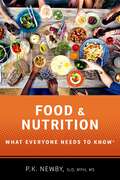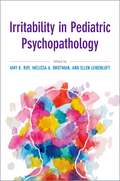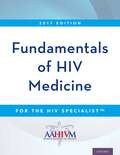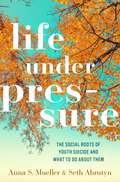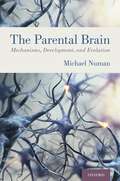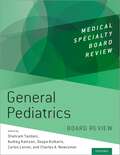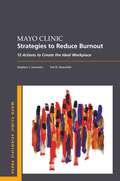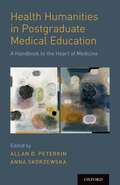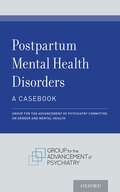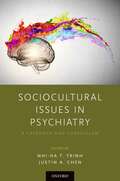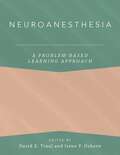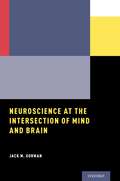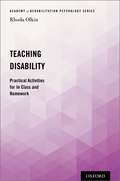- Table View
- List View
Food and Nutrition: What Everyone Needs to Know® (What Everyone Needs To Know®)
by P.K. NewbyFrom gluten-free to all-Paleo, GMOs to grass-fed beef, our newsfeeds abound with nutrition advice. Whether sensational headlines from the latest study or anecdotes from celebrities and food bloggers, we're bombarded with "superfoods" and "best ever" diets promising to help us lose weight, fight disease, and live longer. At the same time, we live in an over-crowded food environment that makes it easy to eat, all the time. The result is an epidemic of chronic disease amidst a culture of nutrition confusion-and copious food choices that challenge everyday eaters just trying to get a healthy meal on the table. But the exhilarating truth is that scientists know an astounding amount about the power of food. A staggering 80% of chronic diseases are preventable through modifiable lifestyle changes, and diet is the single largest contributing factor. And we also know the secrets to eating sustainably to protect our planet. In Food & Nutrition, Harvard- and Columbia-trained nutrition scientist Dr. P.K. Newby examines 134 stand-alone questions addressing "need to know" topics, including how what we eat affects our health and environment, from farm to fork, and why, when it comes to diet, the whole is greater than the sum of its parts-and one size doesn't fit all. At the same time, Newby debunks popular myths and food folklore, encouraging readers to "learn, unlearn, and relearn" the fundamentals of nutrition at the heart of a health-giving diet. Her passion for all things food shines through it all, as does her love of the power of science, technology, and engineering to help create healthier diets for ourselves, and a more sustainable future for the planet we share.
FOOD & NUTRITION WENK C: What Everyone Needs to Know® (What Everyone Needs To Know®)
by P.K. NewbyFrom gluten-free to all-Paleo, GMOs to grass-fed beef, our newsfeeds abound with nutrition advice. Whether sensational headlines from the latest study or anecdotes from celebrities and food bloggers, we're bombarded with "superfoods" and "best ever" diets promising to help us lose weight, fight disease, and live longer. At the same time, we live in an over-crowded food environment that makes it easy to eat, all the time. The result is an epidemic of chronic disease amidst a culture of nutrition confusion-and copious food choices that challenge everyday eaters just trying to get a healthy meal on the table. But the exhilarating truth is that scientists know an astounding amount about the power of food. A staggering 80% of chronic diseases are preventable through modifiable lifestyle changes, and diet is the single largest contributing factor. And we also know the secrets to eating sustainably to protect our planet. In Food & Nutrition, Harvard- and Columbia-trained nutrition scientist Dr. P.K. Newby examines 134 stand-alone questions addressing "need to know" topics, including how what we eat affects our health and environment, from farm to fork, and why, when it comes to diet, the whole is greater than the sum of its parts-and one size doesn't fit all. At the same time, Newby debunks popular myths and food folklore, encouraging readers to "learn, unlearn, and relearn" the fundamentals of nutrition at the heart of a health-giving diet. Her passion for all things food shines through it all, as does her love of the power of science, technology, and engineering to help create healthier diets for ourselves, and a more sustainable future for the planet we share.
Irritability in Pediatric Psychopathology
Pediatric irritability, defined as increased proneness to anger relative to peers, is among the most common reasons for mental health referrals. The past fifteen years have witnessed a dramatic rise in the empirical study of pediatric irritability with the goal of developing more effective methods of assessing and treating these impaired youth. Irritability in Pediatric Psychopathology offers a comprehensive overview of this work, approaching the topic from multiple perspectives and disciplines including child psychiatry, clinical psychology, developmental psychology, and neuroscience. Offering five sections composed of chapters written by international experts, the book begins be defining pediatric irritability, reviewing its prevalence, current assessment methods, and novel behavioral and psychophysiological indicators. The second section reviews the literature on the development of pediatric irritability from preschool age through adolescence and young adulthood. The third section summarizes the current evidence for genetic and neurobiological factors contributing to pediatric irritability, while the fourth reviews its presentation transdiagnostically across mood and anxiety disorders, disruptive behavior disorders, and autism. Finally, the book concludes with a presentation of evidence-based psychological and pharmacological interventions. Irritability in Pediatric Psychopathology is an essential resource for researchers, clinicians, and trainees working with children and adolescents.
Irritability in Pediatric Psychopathology
by Amy Krain Roy, Melissa A. Brotman and Ellen LeibenluftPediatric irritability, defined as increased proneness to anger relative to peers, is among the most common reasons for mental health referrals. The past fifteen years have witnessed a dramatic rise in the empirical study of pediatric irritability with the goal of developing more effective methods of assessing and treating these impaired youth. Irritability in Pediatric Psychopathology offers a comprehensive overview of this work, approaching the topic from multiple perspectives and disciplines including child psychiatry, clinical psychology, developmental psychology, and neuroscience. Offering five sections composed of chapters written by international experts, the book begins be defining pediatric irritability, reviewing its prevalence, current assessment methods, and novel behavioral and psychophysiological indicators. The second section reviews the literature on the development of pediatric irritability from preschool age through adolescence and young adulthood. The third section summarizes the current evidence for genetic and neurobiological factors contributing to pediatric irritability, while the fourth reviews its presentation transdiagnostically across mood and anxiety disorders, disruptive behavior disorders, and autism. Finally, the book concludes with a presentation of evidence-based psychological and pharmacological interventions. Irritability in Pediatric Psychopathology is an essential resource for researchers, clinicians, and trainees working with children and adolescents.
Fundamentals of HIV Medicine 2017
by W. David Hardy American Academy of HIV MedicineCompletely updated for 2017, Fundamentals of HIV Medicine is a comprehensive clinical care publication for the treatment of HIV/AIDS. Published by the American Academy of HIV Medicine, the book offers physicians, pharmacists, nurse practitioners, and other care providers the most up-to-date overview of the latest HIV treatments and guidelines. Embodying the AAHIVM's commitment to promoting uniform excellence in care of seropositive patients, Fundamentals of HIV Medicine 2017 empowers health professionals to deliver standardized, life-sustaining treatment to the patients who need it most. It will serve as an essential clinical reference and provide valuable career enrichment to users across the spectrum of HIV care, treatment, and prevention.
Fundamentals of HIV Medicine 2017
by W. David Hardy American Academy of HIV MedicineCompletely updated for 2017, Fundamentals of HIV Medicine is a comprehensive clinical care publication for the treatment of HIV/AIDS. Published by the American Academy of HIV Medicine, the book offers physicians, pharmacists, nurse practitioners, and other care providers the most up-to-date overview of the latest HIV treatments and guidelines. Embodying the AAHIVM's commitment to promoting uniform excellence in care of seropositive patients, Fundamentals of HIV Medicine 2017 empowers health professionals to deliver standardized, life-sustaining treatment to the patients who need it most. It will serve as an essential clinical reference and provide valuable career enrichment to users across the spectrum of HIV care, treatment, and prevention.
Life under Pressure: The Social Roots of Youth Suicide and What to Do About Them
by Anna S. Mueller Seth AbrutynA rare study that transforms our understanding of why youth die by suicide, why youth suicide clusters happen, and how to stop them Youth suicide clusters have deeply unsettled communities in recent years. While clusters have been widely documented in the media, too little is known about why youth die by suicide, why youth suicide clusters happen, and how to stop them both. In Life under Pressure, Anna S. Mueller and Seth Abrutyn investigate the social roots of youth suicide and why certain places weather disproportionate incidents of adolescent suicides and suicide clusters. Through close examination of kids' lives in a community repeatedly rocked by youth suicide clusters, Mueller and Abrutyn reveal how the social worlds that youth inhabit and the various messages they learn in those spaces--about who they are supposed to be, mental illness, and help-seeking--shape their feelings about themselves and in turn their risk of suicide. With great empathy, Mueller and Abrutyn also identify the moments when adults unintentionally fail kids by not talking to them about suicide, teaching them how to seek help, or helping them grieve. Through stories of survival, resilience, and even rebellion, Mueller and Abrutyn show how social environments can cause suicide and how they can be changed to help kids discover a life worth living. By revealing what it is like to live and die in one community, Life under Pressure offers tangible solutions to one of the twenty-first century's most tragic public health problems.
Life under Pressure: The Social Roots of Youth Suicide and What to Do About Them
by Anna S. Mueller Seth AbrutynA rare study that transforms our understanding of why youth die by suicide, why youth suicide clusters happen, and how to stop them Youth suicide clusters have deeply unsettled communities in recent years. While clusters have been widely documented in the media, too little is known about why youth die by suicide, why youth suicide clusters happen, and how to stop them both. In Life under Pressure, Anna S. Mueller and Seth Abrutyn investigate the social roots of youth suicide and why certain places weather disproportionate incidents of adolescent suicides and suicide clusters. Through close examination of kids' lives in a community repeatedly rocked by youth suicide clusters, Mueller and Abrutyn reveal how the social worlds that youth inhabit and the various messages they learn in those spaces--about who they are supposed to be, mental illness, and help-seeking--shape their feelings about themselves and in turn their risk of suicide. With great empathy, Mueller and Abrutyn also identify the moments when adults unintentionally fail kids by not talking to them about suicide, teaching them how to seek help, or helping them grieve. Through stories of survival, resilience, and even rebellion, Mueller and Abrutyn show how social environments can cause suicide and how they can be changed to help kids discover a life worth living. By revealing what it is like to live and die in one community, Life under Pressure offers tangible solutions to one of the twenty-first century's most tragic public health problems.
The Parental Brain: Mechanisms, Development, and Evolution
by Michael NumanThe Parental Brain: Mechanisms, Development, and Evolution presents a comprehensive analysis of how the brain regulates parental behavior in nonhuman animals and in humans, how these brain mechanisms develop, and how such development can go awry, leading to faulty parental behavior. Further, the proposal is examined that the maternal brain served as a foundation or template for the evolution of other types of strong prosocial bonds in mammals, such as the hyper-prosociality that occurs in humans. Unique aspects of this book are its multilevel perspective and the integration and comparison of animal and human research in order to create a complete understanding of the parental brain. Topics covered include the following: · Maternal, paternal, and alloparental behavior · Hormonal regulation of parental behavior · Oxytocin and parental behavior · Subcortical neural circuits regulating parental behavior in nonhuman mammals · The interactions between cortical and subcortical neural circuits that are associated with parental cognitions, emotions, and behavior in humans · How maternal care directed toward one's infants influences the development of the parental brain in the affected infants · The intergenerational transmission or continuity of normal and abnormal maternal behavior · The involvement of epigenetics and gene by environment interactions in the development of the parental brain · Evolutionary perspectives on the parental brain, particularly with respect to alloparenting and cooperative breeding that have provided a framework for appreciating how the parental brain could have provided a foundation for the hyper-prosociality that occurs within human social groups This book will be a valuable resource for behavioral neuroscientists and neuroendocrinologists, social neuroscientists, developmental psychobiologists and psychologists, anthropologists, and evolutionary psychologists with an interest in parental behavior, mother-infant relationships, child development, and the evolution of prosocial behavior.
The Parental Brain: Mechanisms, Development, and Evolution (Hormones, Brain, And Behavior Ser. #1)
by Michael NumanThe Parental Brain: Mechanisms, Development, and Evolution presents a comprehensive analysis of how the brain regulates parental behavior in nonhuman animals and in humans, how these brain mechanisms develop, and how such development can go awry, leading to faulty parental behavior. Further, the proposal is examined that the maternal brain served as a foundation or template for the evolution of other types of strong prosocial bonds in mammals, such as the hyper-prosociality that occurs in humans. Unique aspects of this book are its multilevel perspective and the integration and comparison of animal and human research in order to create a complete understanding of the parental brain. Topics covered include the following: · Maternal, paternal, and alloparental behavior · Hormonal regulation of parental behavior · Oxytocin and parental behavior · Subcortical neural circuits regulating parental behavior in nonhuman mammals · The interactions between cortical and subcortical neural circuits that are associated with parental cognitions, emotions, and behavior in humans · How maternal care directed toward one's infants influences the development of the parental brain in the affected infants · The intergenerational transmission or continuity of normal and abnormal maternal behavior · The involvement of epigenetics and gene by environment interactions in the development of the parental brain · Evolutionary perspectives on the parental brain, particularly with respect to alloparenting and cooperative breeding that have provided a framework for appreciating how the parental brain could have provided a foundation for the hyper-prosociality that occurs within human social groups This book will be a valuable resource for behavioral neuroscientists and neuroendocrinologists, social neuroscientists, developmental psychobiologists and psychologists, anthropologists, and evolutionary psychologists with an interest in parental behavior, mother-infant relationships, child development, and the evolution of prosocial behavior.
General Pediatrics Board Review (Medical Specialty Board Review)
General Pediatrics Board Review is a comprehensive guide for recent residency graduates and re-certifiers preparing for the American Board of Pediatrics (ABP) board exam. The text consists of over 1000 multiple-choice questions, organized into 25 chapters covering pediatrics topics such as fetal and neonatal care, adolescent and young adult medicine, genetics, child maltreatment, pediatric infectious diseases, gastrointestinal disorders, and more. Chapters include questions, answers with detailed explanations and references to primary or landmark articles to help better navigate a standardized exam. Questions are written in a case-based format that emulates the ABP board exam, and are supplemented by figures, tables, and boxes. A Quick Facts section rounds out the text for ease of reference.
General Pediatrics Board Review (Medical Specialty Board Review)
by Shahram Yazdani, Audrey Kamzan, Deepa Kulkarni, Carlos Lerner, Charles A. NewcomerGeneral Pediatrics Board Review is a comprehensive guide for recent residency graduates and re-certifiers preparing for the American Board of Pediatrics (ABP) board exam. The text consists of over 1000 multiple-choice questions, organized into 25 chapters covering pediatrics topics such as fetal and neonatal care, adolescent and young adult medicine, genetics, child maltreatment, pediatric infectious diseases, gastrointestinal disorders, and more. Chapters include questions, answers with detailed explanations and references to primary or landmark articles to help better navigate a standardized exam. Questions are written in a case-based format that emulates the ABP board exam, and are supplemented by figures, tables, and boxes. A Quick Facts section rounds out the text for ease of reference.
Mayo Clinic Strategies To Reduce Burnout: 12 Actions to Create the Ideal Workplace (Mayo Clinic Scientific Press)
by Stephen Swensen Tait ShanafeltMayo Clinic Strategies to Reduce Burnout: 12 Actions to Create the Ideal Workplace tells the story of the evolving journey of those in the medical profession. It dwells not on the story of burnout, distress, compassion fatigue, moral injury, and cognitive dissonance but rather on a narrative of hope for professional fulfillment, well-being, joy, and camaraderie. Achieving this aim requires health care professionals and administrative leaders working together to create the ideal workplace-through nurturing positivity and pushing negativity aside. The ultimate aspiration is esprit de corps-the common spirit existing in members of a group that inspires enthusiasm, devotion, loyalty, camaraderie, engagement, and strong regard for the welfare of the team and of common interests and responsibilities. Mayo Clinic Strategies to Reduce Burnout: 12 Actions to Create the Ideal Workplace provides a road map for you to create esprit de corps for your team and organization. The map is paved with information about reliable, patient-centered, and thoughtful systems embedded within psychologically safe and just cultures. The authors drew on their extensive research on the well-being of health care professionals; from their experience in quality, department operations, leadership and organization development, management, safe havens, and care teams; and from their roles as president, chief wellness officer, chief quality officer, chair, principal investigator, senior fellow, and board director.
Mayo Clinic Strategies To Reduce Burnout: 12 Actions to Create the Ideal Workplace (Mayo Clinic Scientific Press)
by Stephen Swensen Tait ShanafeltMayo Clinic Strategies to Reduce Burnout: 12 Actions to Create the Ideal Workplace tells the story of the evolving journey of those in the medical profession. It dwells not on the story of burnout, distress, compassion fatigue, moral injury, and cognitive dissonance but rather on a narrative of hope for professional fulfillment, well-being, joy, and camaraderie. Achieving this aim requires health care professionals and administrative leaders working together to create the ideal workplace-through nurturing positivity and pushing negativity aside. The ultimate aspiration is esprit de corps-the common spirit existing in members of a group that inspires enthusiasm, devotion, loyalty, camaraderie, engagement, and strong regard for the welfare of the team and of common interests and responsibilities. Mayo Clinic Strategies to Reduce Burnout: 12 Actions to Create the Ideal Workplace provides a road map for you to create esprit de corps for your team and organization. The map is paved with information about reliable, patient-centered, and thoughtful systems embedded within psychologically safe and just cultures. The authors drew on their extensive research on the well-being of health care professionals; from their experience in quality, department operations, leadership and organization development, management, safe havens, and care teams; and from their roles as president, chief wellness officer, chief quality officer, chair, principal investigator, senior fellow, and board director.
Health Humanities in Postgraduate Medical Education
by Allan D. Peterkin Anna SkorzewskaMost medical schools in the US, Canada and UK now incorporate some form of arts and humanities-based teaching into their curricula. What happens in residency is another story. Most postgraduate programs do not continue the thread of such teaching although many residents would like to deepen their understanding of the medical humanities before they move into practice. The humanities emphasize "the human side of medicine", and can provide a counterpoint to the reductionism of evidence-based medicine and technological hubris for young doctors as they apply new knowledge and skills in ambiguous, real-life encounters with patients who are living with complicated health problems. Humanities-based education can help both sides of the relationship: programs are shown to reduce burnout and mental health issues in young physicians, and can also help learning practitioners grapple with the most difficult aspects of their craft: how does one persuade patients on a course of treatment, while respecting informed consent? How does one work with families? How does one listen to and treat patients exhibiting self-harm tendencies? Available research may demonstrate the efficacy of such exposures, but provide little practical advice or resources for setting up programs across specialty and sub-specialty disciplines. Health Humanities in Post-Graduate Medical Education will fill this gap in knowledge translation for the thousands of residency programs worldwide, allowing educators, supervisors, and residents themselves to create robust and educationally sound workshops, seminars, study groups, lecture series, research and arts-based projects, publications and events.
Health Humanities in Postgraduate Medical Education
by Allan D. Peterkin Anna SkorzewskaMost medical schools in the US, Canada and UK now incorporate some form of arts and humanities-based teaching into their curricula. What happens in residency is another story. Most postgraduate programs do not continue the thread of such teaching although many residents would like to deepen their understanding of the medical humanities before they move into practice. The humanities emphasize "the human side of medicine", and can provide a counterpoint to the reductionism of evidence-based medicine and technological hubris for young doctors as they apply new knowledge and skills in ambiguous, real-life encounters with patients who are living with complicated health problems. Humanities-based education can help both sides of the relationship: programs are shown to reduce burnout and mental health issues in young physicians, and can also help learning practitioners grapple with the most difficult aspects of their craft: how does one persuade patients on a course of treatment, while respecting informed consent? How does one work with families? How does one listen to and treat patients exhibiting self-harm tendencies? Available research may demonstrate the efficacy of such exposures, but provide little practical advice or resources for setting up programs across specialty and sub-specialty disciplines. Health Humanities in Post-Graduate Medical Education will fill this gap in knowledge translation for the thousands of residency programs worldwide, allowing educators, supervisors, and residents themselves to create robust and educationally sound workshops, seminars, study groups, lecture series, research and arts-based projects, publications and events.
Postpartum Mental Health Disorders: A Casebook
by Group for Committee on Gender and Mental HealthMany psychiatrists, obstetricians, primary care physicians, nurse practitioners, and other health care professionals have not been trained to adequately identify psychiatric disorders that present in postpartum women, and yet are often faced with patients expressing mental health symptoms that may lead to serious problems. Postpartum Mental Health Disorders: A Casebook offers brief, practical guidance on the recognition and management of postpartum mental health disorders, including depression, anxiety disorders, obsessive compulsive disorder (OCD), psychotic disorders, bipolar disorders, posttraumatic stress disorders, personality disorders and eating disorders. Written by experienced clinicians, chapters are organized into collections of case examples and are designed to provide at-a-glance information about diagnoses, treatment, and outcomes with advice on when to refer to a specialist. Each chapter also includes an assessment tool to assist with diagnosis and a list of risk factors for developing postpartum disorders. An appendix of screening questionnaires is provided at the end of the book.
Postpartum Mental Health Disorders: A Casebook
by Group for Committee on Gender and Mental HealthMany psychiatrists, obstetricians, primary care physicians, nurse practitioners, and other health care professionals have not been trained to adequately identify psychiatric disorders that present in postpartum women, and yet are often faced with patients expressing mental health symptoms that may lead to serious problems. Postpartum Mental Health Disorders: A Casebook offers brief, practical guidance on the recognition and management of postpartum mental health disorders, including depression, anxiety disorders, obsessive compulsive disorder (OCD), psychotic disorders, bipolar disorders, posttraumatic stress disorders, personality disorders and eating disorders. Written by experienced clinicians, chapters are organized into collections of case examples and are designed to provide at-a-glance information about diagnoses, treatment, and outcomes with advice on when to refer to a specialist. Each chapter also includes an assessment tool to assist with diagnosis and a list of risk factors for developing postpartum disorders. An appendix of screening questionnaires is provided at the end of the book.
Sociocultural Issues in Psychiatry: A Casebook and Curriculum
As the demographics shift within the US population, the importance of culture on mental health diagnosis and treatment has become critical for education and clinical training in psychiatry. While it's impossible to gain an in-depth understanding of every culture, clinicians need to have the skills and knowledge required to provide culturally respectful care for an increasingly diverse clinical population. By explaining fundamental concepts in cultural psychiatry using a case-based format, clinicians and educators in the mental health fields will be able to reduce cultural clashes and unproductive clinical encounters. Although similar books have focused on providing guidelines for working with discrete populations (e.g., African Americans, Asian Americans, LGBTQ), the purpose of Sociocultural Issues in Psychiatry is to enhance clinicians' knowledge and skills by translating theory into practice across diverse patient populations and clinical contexts. Mental health clinicians at all levels, trainees, or practitioners, will benefit from the content and education provided in this book.
Sociocultural Issues in Psychiatry: A Casebook and Curriculum
by NHI-HA T. TRINH Justin A. ChenAs the demographics shift within the US population, the importance of culture on mental health diagnosis and treatment has become critical for education and clinical training in psychiatry. While it's impossible to gain an in-depth understanding of every culture, clinicians need to have the skills and knowledge required to provide culturally respectful care for an increasingly diverse clinical population. By explaining fundamental concepts in cultural psychiatry using a case-based format, clinicians and educators in the mental health fields will be able to reduce cultural clashes and unproductive clinical encounters. Although similar books have focused on providing guidelines for working with discrete populations (e.g., African Americans, Asian Americans, LGBTQ), the purpose of Sociocultural Issues in Psychiatry is to enhance clinicians' knowledge and skills by translating theory into practice across diverse patient populations and clinical contexts. Mental health clinicians at all levels, trainees, or practitioners, will benefit from the content and education provided in this book.
Neuroanesthesia: A Problem-Based Learning Approach (Anaesthesiology: A Problem-Based Learning Approach)
by Magdalena AnitescuNeuroanesthesia: A Problem-Based Learning Approach provides an up-to-date and comprehensive review of the neuroanesthesia subspecialty. Its problem-based format incorporates a pool of practical, multiple-choice questions for self-assessment. Each of its 29 case-based chapters is accompanied by 10 questions and answers, accessible online in a full practice exam. The cases presented are also unique, as each chapter starts with a case description, usually a compilation of several actual cases; it then branches out through case-based questions, to increasingly complex situations. This structure is designed to create an authentic experience that mirrors that of an oral board examination. The discussion sections that follow offer a comprehensive approach to the chapter's subject matter, thus creating a modern, complete, and up-to-date medical review of that topic. This book is equally a solid reference compendium of neuroanesthesia topics and a comprehensive review to assist the general practitioner both in day-to-day practice and during preparation for certification exams. Its problem-based format makes it an ideal resource for the lifelong learner and the modern realities of education.
Neuroscience at the Intersection of Mind and Brain
by Jack M. GormanNeuroscience, the study of the structure and function of the brain, has captured our imaginations. Breakthrough technologies permit neuroscientists to probe how the human brain works in ever-more fascinating detail, revealing what happens when we think, move, love, hate, and fear. We know more than ever before about what goes wrong in the brain when we develop psychiatric and neurological illnesses like depression, dementia, epilepsy, panic attacks, and schizophrenia. We also now have clues about how treatments for those disorders change the way our brains look and function. Neuroscience at the Intersection of Mind and Brain has three main purposes. First, it makes complicated concepts and findings in modern neuroscience accessible to anyone with an interest in how the brain works. Second, it explains in detail how every experience we have from the moment we are conceived changes our brains. Third, it advances the idea that psychotherapy is a type of life experience that alters brain function and corrects aberrant brain connections. Among the topics covered are: what makes our brains different from those of other primates, our nearest genetic neighbors? How do life's experiences affect genetic expression of the brain and the way neurons connect with each other? Why are connections between different parts of the brain important in both health and disease? What happens in the brains of animals and humans when we are suddenly afraid of something, get depressed, or fall in love? How do medications and psychotherapies work? The information in this book is based on cutting-edge research in neuroscience, psychiatry, and psychology. Written by an author who studied human behavior and brain function for three decades, it is presented in a highly accessible manner, full of personal anecdotes and observations, and touches on many of the controversies in contemporary mental health practice.
Neuroscience at the Intersection of Mind and Brain
by Jack M. GormanNeuroscience, the study of the structure and function of the brain, has captured our imaginations. Breakthrough technologies permit neuroscientists to probe how the human brain works in ever-more fascinating detail, revealing what happens when we think, move, love, hate, and fear. We know more than ever before about what goes wrong in the brain when we develop psychiatric and neurological illnesses like depression, dementia, epilepsy, panic attacks, and schizophrenia. We also now have clues about how treatments for those disorders change the way our brains look and function. Neuroscience at the Intersection of Mind and Brain has three main purposes. First, it makes complicated concepts and findings in modern neuroscience accessible to anyone with an interest in how the brain works. Second, it explains in detail how every experience we have from the moment we are conceived changes our brains. Third, it advances the idea that psychotherapy is a type of life experience that alters brain function and corrects aberrant brain connections. Among the topics covered are: what makes our brains different from those of other primates, our nearest genetic neighbors? How do life's experiences affect genetic expression of the brain and the way neurons connect with each other? Why are connections between different parts of the brain important in both health and disease? What happens in the brains of animals and humans when we are suddenly afraid of something, get depressed, or fall in love? How do medications and psychotherapies work? The information in this book is based on cutting-edge research in neuroscience, psychiatry, and psychology. Written by an author who studied human behavior and brain function for three decades, it is presented in a highly accessible manner, full of personal anecdotes and observations, and touches on many of the controversies in contemporary mental health practice.
Teaching Disability: Practical Activities for In Class and Homework (Academy of Rehabilitation Psychology Series)
by Rhoda OlkinThis book takes a nonpathological approach to disability, viewing it as part of diversity rather than as deficit. The opening chapters introduce basic knowledge of teaching in disability communities, covering attitudes and behaviors that may be difficult for instructors to relate to. Next, the book delves into the three activities sections that increase in difficulty over the course of the book. The activities highlight barriers and psychosocial impediments that hamper progress in disability communities. Designed by an expert educator and clinician who is also an insider in the disability community, each of the 34 activities translate well in classroom environments or as homework, and each can be done individually or in group settings. All activities include a list of required materials, time expectation, goal setting criteria, possible outcomes, and talking and debriefing points for reflection, thereby facilitating effective planning and execution. The activities also recommend possible modifications to adjust the difficulty of the activities. This flexibility makes this a valuable resource for a wider audience of expertise and settings, ranging from introductory to sophisticated readers and users, students and non-students, in classrooms, in workshops, or in other surroundings. Lastly, the book concludes with a chapter on accessing outcomes, with six measures for evaluating knowledge and skill. Teaching Disability is a well-rounded, highly applicable tool for instructors and students in the disability community.
Teaching Disability: Practical Activities for In Class and Homework (Academy of Rehabilitation Psychology Series)
by Rhoda OlkinThis book takes a nonpathological approach to disability, viewing it as part of diversity rather than as deficit. The opening chapters introduce basic knowledge of teaching in disability communities, covering attitudes and behaviors that may be difficult for instructors to relate to. Next, the book delves into the three activities sections that increase in difficulty over the course of the book. The activities highlight barriers and psychosocial impediments that hamper progress in disability communities. Designed by an expert educator and clinician who is also an insider in the disability community, each of the 34 activities translate well in classroom environments or as homework, and each can be done individually or in group settings. All activities include a list of required materials, time expectation, goal setting criteria, possible outcomes, and talking and debriefing points for reflection, thereby facilitating effective planning and execution. The activities also recommend possible modifications to adjust the difficulty of the activities. This flexibility makes this a valuable resource for a wider audience of expertise and settings, ranging from introductory to sophisticated readers and users, students and non-students, in classrooms, in workshops, or in other surroundings. Lastly, the book concludes with a chapter on accessing outcomes, with six measures for evaluating knowledge and skill. Teaching Disability is a well-rounded, highly applicable tool for instructors and students in the disability community.
